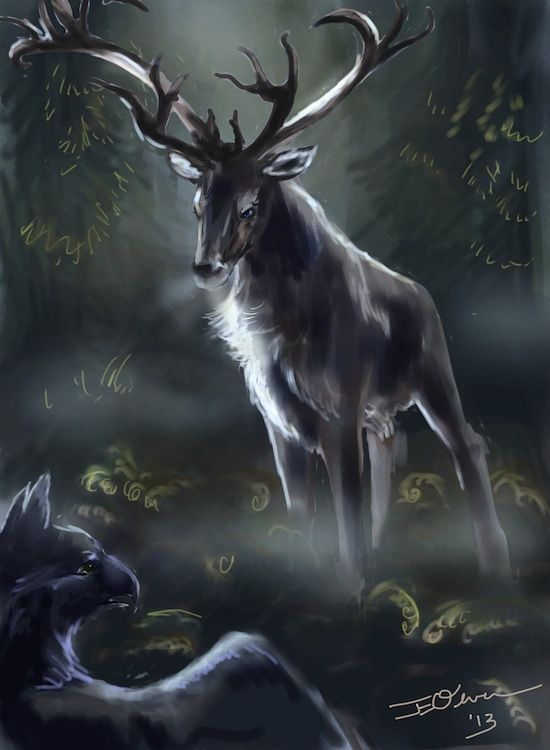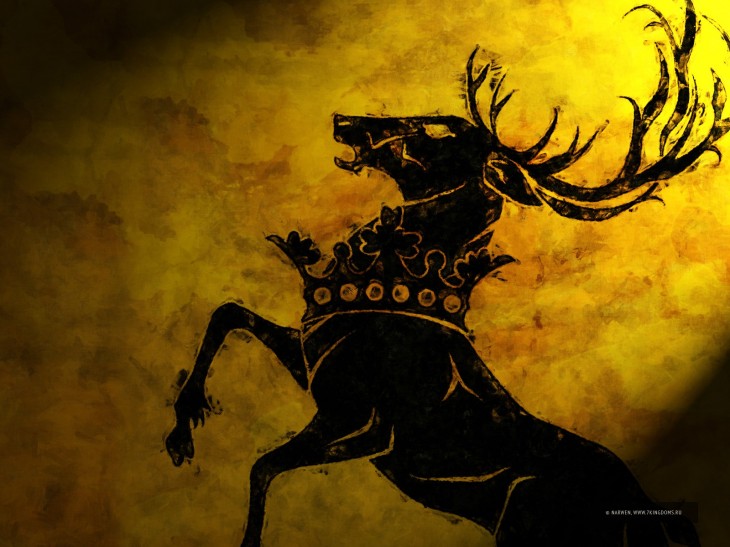Mythic Origins

Representing several species which are found around the globe, the Ungulates, or Weredeer, as they are commonly called, trace their ancestry to the Celtic God Cernunnos, Lord of the Forest, Master of the Hunt, God of Life and Death. In the ancient epochs of the world, Cernunnos strode the primal wilderness, tired and bored. A wolf came out of the greenwood and fixed its eyes on the God. Rather than being dismayed at the divinity it saw, the wolf was hungry, giving chase to Cernunnos, who was bored enough that the novelty of being hunted was appealing.
As the wolf hunted him, Cernunnos’ body changed, become sleek and swift, adopting hooves for solid grip on Mother Earth and to help speed it on its path. The wolf was undeterred by this change and its pace grew faster. As it gave chase its howl carved through the stillness of the forest, calling its pack.
Cernunnos ran on, eventually becoming the White Hart, a deer of surpassing loveliness and grace, but one without antlers. At last, the pack caught up and surrounded Cernunnos, forcing him to halt and give battle. At that moment, his head sprouted a magnificent crown of antlers, and Cernunnos fought for his life against the wolves.
Cernunnos killed several wolves, but was eventually brought down. As he died in the shape of the stag, he crossed into the realm of the dead, and thus became keeper of that doorway. Mother Earth wept and grew cold, sending winter to grip the land in Her grief. Some months later, Cernunnos rose from his grave, bringing Spring back to the world.
Carrying on his way, Cernunnos paused, reflecting briefly on his adventure, and gave of himself in order to ensure that the White Hart would never again leave the world. Thus was born the first Weredeer.
Leadership & Social Structure

A group of Wereungulates can be comprised of several different types of deer-like animals. In North America, Deer, Elk and Moose are the most common along with antelope, and such a gathering of the Weredeer is called a Drove.
Droves exist all over the world, but tend to exist in greater numbers where there are a greater number of lycanthropic predators. This relationship is odd, as Weredeer do not willingly offer up their lives for hunting predators, but they are present together nonetheless. Droves are typically led by a single male known as the Cernuni, an homage to their namesake and purported progenitor. The Cernuni may have a harem of females with which it mates for pleasure or for offspring, but all such females are willing participants rather than forcibly bedded or compelled to service the Cernuni.
The Cernuni is assisted by the Nemetona, or female mate of the Cernuni who helps the Cernuni govern the Drove and which adopts a mothering role to the group. Typically, a Cernuni with a Nemetona does not have a harem, but exceptions do exist to this rule. The mated pair govern their Drove not with the same finality of the predator lycanthropes, but rather as guardians of consensus and as “First-Among-Equals”. Dominance struggles are milder affairs than they are with the predatory lycanthropes, and typically only males engage in such struggles as they prove their worthiness of mating.
The Cernuni and the Nemetona are each assisted by their seconds, which are typically another mated pair, referred to as the Grannus (male) and Sirona (female). These seconds are responsible for the security and safety of the Drove (in the case of the Grannus) and for the education and spiritual health of the Drove (in the case of the Sirona).
The last recognized rank within the Drove is that of the Dagda, which can be male or female. The Dagda is never one of the Weredeer species, but usually an outsider adopted into the Drove that serves as the Drove's magician, healer, and soothsayer. In some cases, the Dagda can countermand instructions by the Cernuni and the Nemetona, ruling the Drove by fiat, citing the will of the Gods, or the Spirits.

General Traits & Abilities
Nature is a bitch, but she is a bitch that believes in balance. Whenever something in nature exists, there also exists in nature its opposite. As there are predators that are bound up in lycanthropy, so too are there prey animals.
Ungulates, as a prey species, have limited offensive capabilities, but can use their antlers to fight along with their hooves and powerful kick, and have found strength in numbers. More often, they rely on awareness and avoidance, using their senses to note changes in their surroundings, followed by speed and agility to aid their flight.